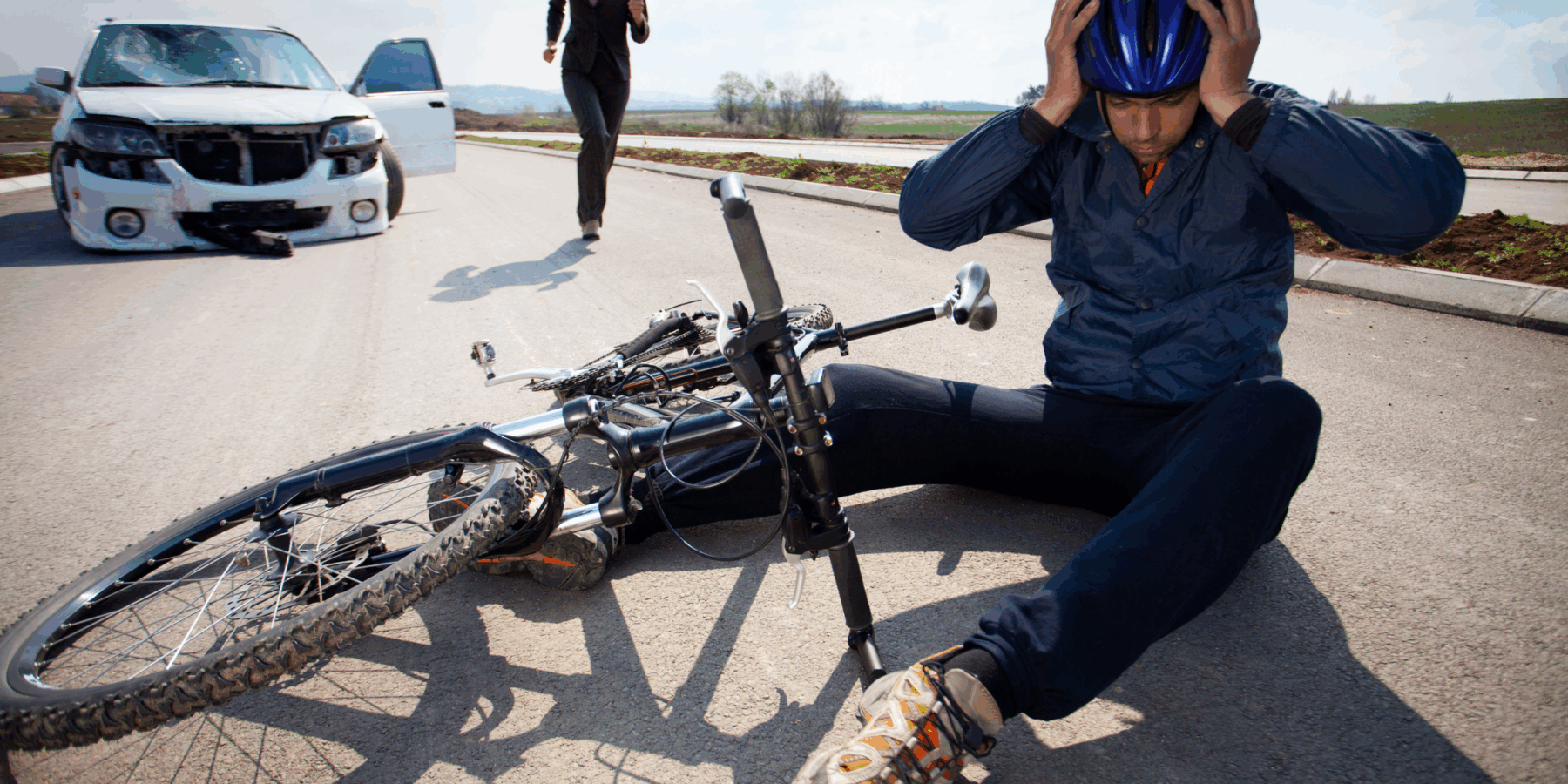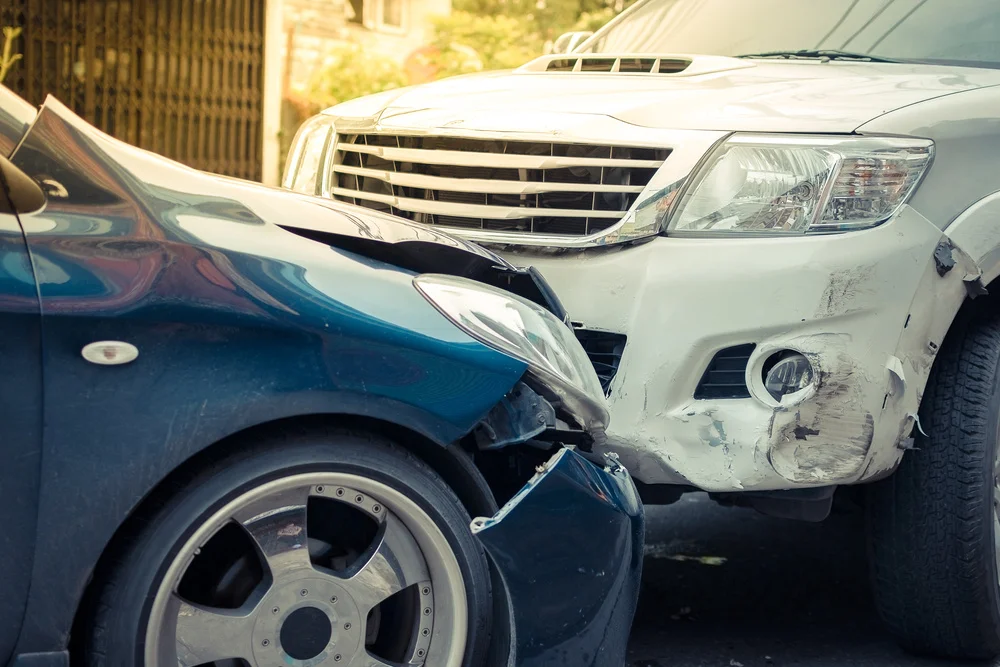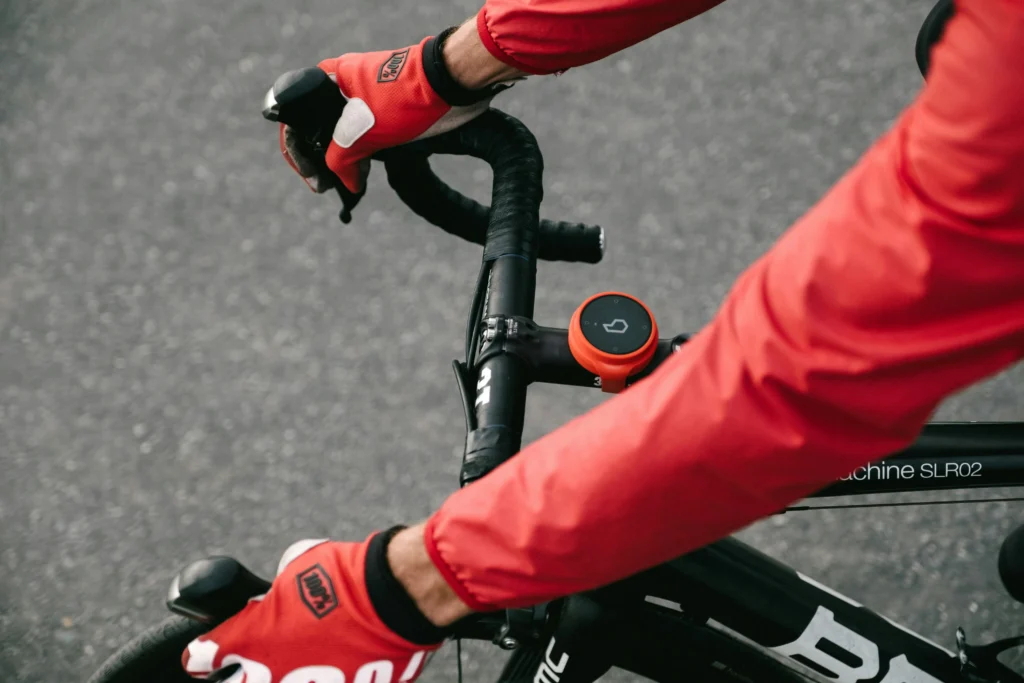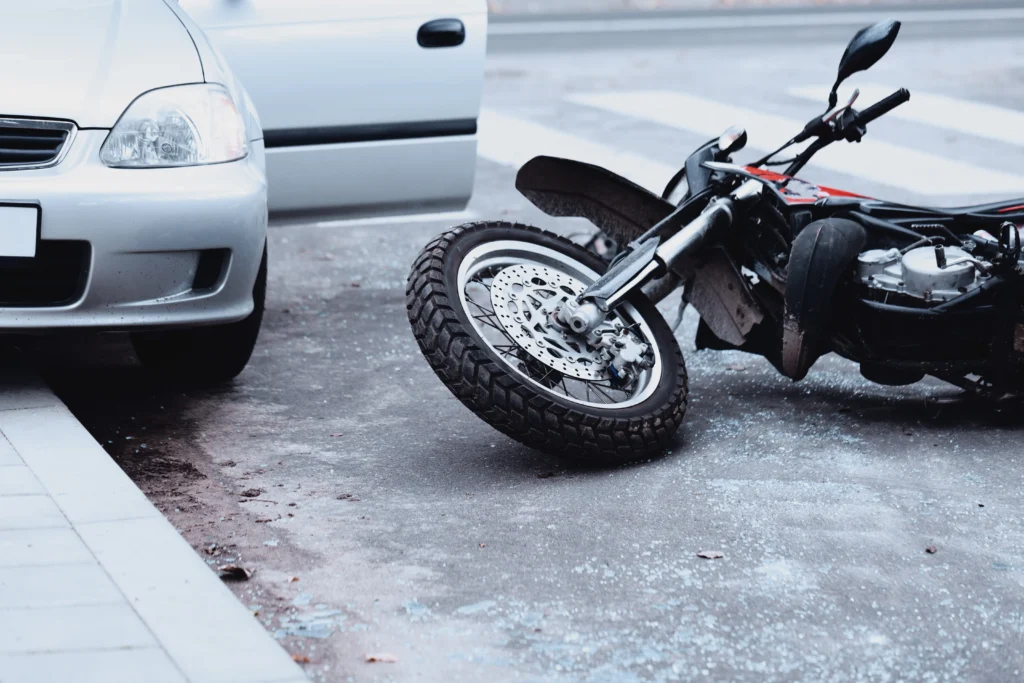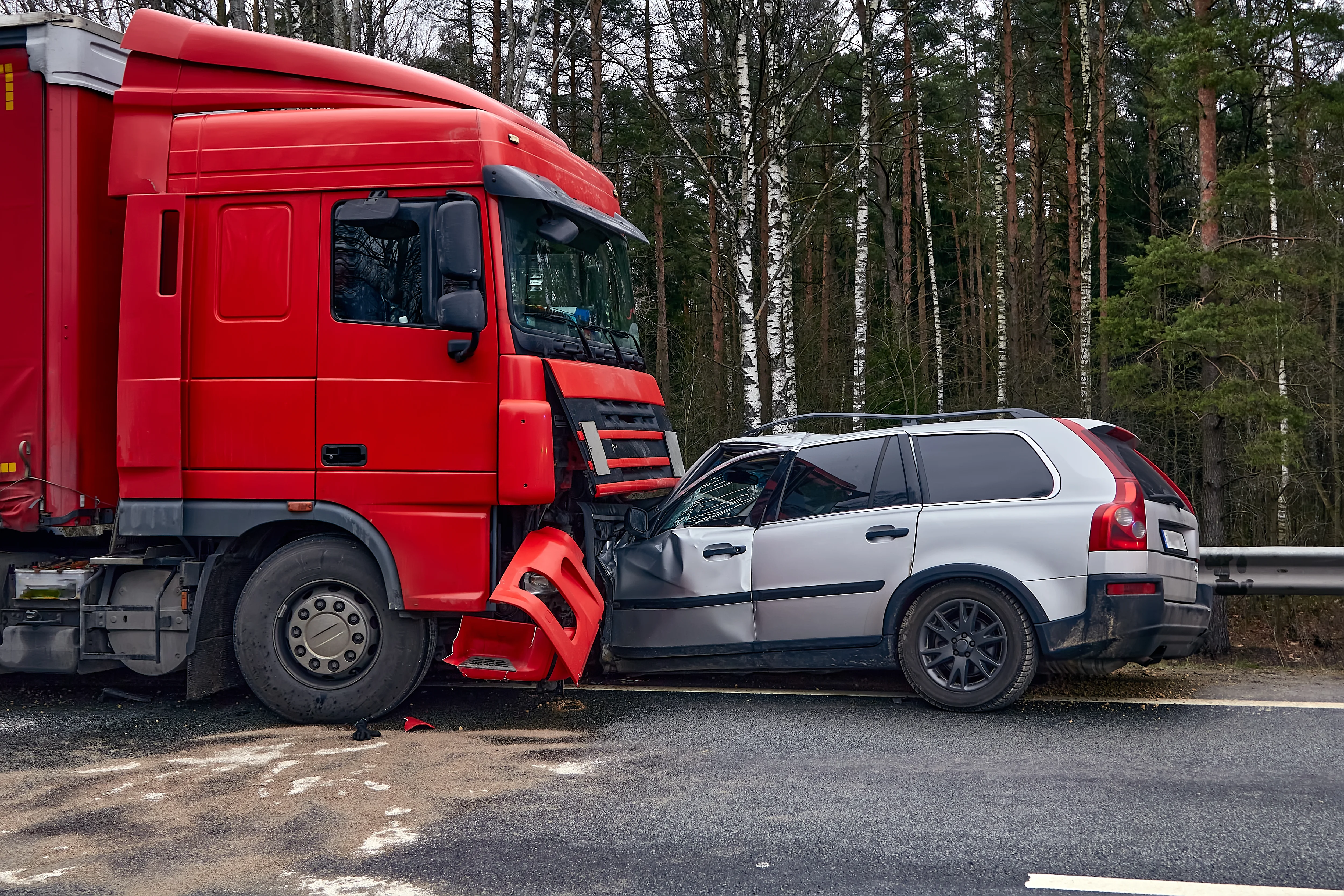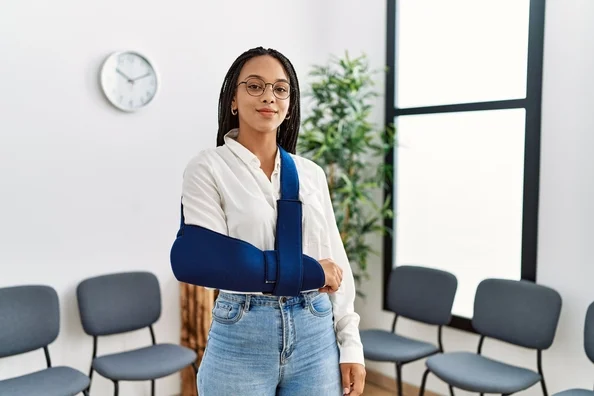Bicycle Injury Attorneys Serving Puyallup Riders
If you got hit while biking in Puyallup, you’re not alone. Valley bicyclists are faced daily with risk on roads like Meridian, Pioneer, and Shaw. From distracted drivers to rough intersections, bicycle crashes are on the rise. At Bernard Law Group, we stand ready to represent injured Puyallup bikers and have them taking action promptly. We’ve recovered over $500 million for Washington injury victims and we’re ready to fight for you.
Bicyclists under Washington law are given the same rights as drivers. However, in the event of a mishap, such rights are generally overlooked by insurance companies. Thus, we move quickly to record video evidence, obtain witness statements, and bring negligent drivers to justice. Whether your injury happened near Wildwood Park or happened while crossing River Road coming from the Puyallup Station, we build strong claims that demand utmost settlement.
Puyallup does not have extensive bike infrastructure and growing traffic from nearby South Hill. These conditions increase the risk to in-town cyclists. According to WSDOT’s crash data portal, collisions involving bikes throughout Pierce County are a constant risk, especially rush hour and schools.
You needn’t endure the trauma of a bicycle accident alone. Call us at (206) 752-2233 today and speak to our legal team. We will explain your rights and start with a free consultation. We only get paid if you recover.
Bike Accidents in Puyallup Happen Fast and the Evidence Is Gone Before You Know It
When a Puyallup bicycle crash happens, the evidence doesn’t wait. It disappears as quickly as the bike was hit. Skid marks fade, security cameras record over critical footage, and drivers walk away with their version of events unchallenged. Every hour that passes helps the insurance company, not the person hit on two wheels. Our legal team acts immediately. We secure visual proof, recover bystander accounts, and document roadway hazards that often vanish within 24 hours.
Injury cases involving Puyallup cyclists are different from car accidents. Cyclists have no airbags, no steel frame to absorb the force. That’s why we collect every detail to prove fault. We do not rely on guesswork or vague reports. Instead, we gather video footage, inspect bike damage, preserve physical evidence, and subpoena commercial camera feeds. This approach forces insurers to face the facts. You won’t find delay tactics here. We know how fast Puyallup traffic moves and how fast you need legal action.
Video Footage From Puyallup Intersections Shows What Really Happened
Traffic cameras across downtown Puyallup and South Hill capture constant activity. They also record countless near misses and collisions. When a cyclist is hit near 5th Street NW, Shaw Road, or Meridian Avenue, there’s a good chance it was caught on film. Our team locates that footage immediately. We don’t wait for insurance adjusters to do it. We file urgent public records requests and preservation notices before the data is erased.
That footage often shows exactly what the driver did or failed to do. Was the turn illegal? Did the driver run the signal? Was the cyclist in the marked lane? These questions get answered with video, not speculation. According to WSDOT’s public camera access tools, cameras positioned at major Pierce County arterials store real-time traffic events. We use these resources to lock in visual proof of negligence.
Security Cameras Near Stores and Schools Often Capture the Impact
Retail businesses and school campuses throughout Puyallup maintain security systems aimed at their entrances and lots. These systems frequently catch bicycle crashes that happen just outside their property. Intersections near Puyallup High School, Sunrise Medical Campus, or Fred Meyer often have camera views that catch the collision frame by frame.
We canvass nearby locations, request footage within hours, and follow up with written demands under Washington’s discovery rules. Time is critical. Some systems overwrite footage every 48 hours. If that data is lost, the insurance company gains an advantage. We don’t let that happen.
Gas Stations and Transit Zones Provide Overlooked Camera Angles
Fuel stations at major intersections like 23rd Avenue SE or River Road often capture helpful crash footage without even realizing it. These angles are often higher and wider than traffic cams. In bike crashes involving sideswipes, crosswalk violations, or sudden swerves, these recordings prove invaluable.
We locate the exact timestamp and camera type, then contact store management to preserve and release the digital file. Sometimes we get better proof from a Shell station than from official city footage. That’s why we check every possible source.
Eyewitness Statements Strengthen Bicycle Injury Claims in Puyallup
Not every crash gets seen by police, but most of them get seen by people. Whether you were hit near DeCoursey Park or outside the Puyallup Public Library, someone likely saw it happen. Our legal team locates those people and gets their statements before the memory fades. We speak to local business workers, joggers, bus riders, and employees who were walking nearby when the crash occurred.
These accounts help clarify the position of the cyclist, the driver’s actions, and any attempt to brake, swerve, or avoid impact. Insurance companies often dismiss bike injuries as minor or blame the rider. Witness testimony can end that narrative. We document every word, timestamp the report, and build it into the claim file.
Neutral Witnesses From South Hill and Downtown Add Credibility
Witnesses without a stake in the outcome carry weight. We often find these people by returning to the scene within a day or two of the crash. Our investigators check parking lots, customer service counters, and transit stops. These independent accounts are harder for insurance companies to ignore.
People who saw the collision but don’t know the parties involved are more likely to offer honest, reliable details. They strengthen the case and support your version of events. Their credibility is a tool we use to apply pressure early in the claims process.
Employee Logs and Business Visitor Records Help Locate Witnesses
In commercial zones, we request visitor sign-in sheets, service logs, and delivery schedules. If a UPS driver, restaurant worker, or maintenance tech saw your crash near 39th Avenue SW, we want to speak to them. These records often lead us to people that never got interviewed at the scene.
According to the Washington Department of Labor & Industries, documentation from work zones and commercial operations can be used to identify events leading up to workplace and public safety incidents. We apply that same strategy to bike crashes involving commercial areas.
Bicycle Damage and Road Debris Tell the Story the Driver Won’t
The condition of your bicycle helps explain the crash in physical terms. Bent rims, fractured carbon frames, tire abrasions, and chain misalignment are all indicators of impact direction and force. Our team inspects the bike in its damaged state before it’s repaired or discarded. We document every crack and scrape.
This damage helps support claims for concussions, spinal injuries, and wrist fractures. It also disproves claims that the crash was “low impact.” We match the bike’s condition to vehicle bumper height, paint transfer, and medical reports. That linkage adds weight to your demand for compensation.
Skid Marks and Debris Prove Speed and Stopping Distance
Tire marks in the roadway, broken glass, reflector shards, and plastic vehicle parts tell a story. We photograph them immediately. These materials are often swept away within hours by city maintenance or rainfall. Once they’re gone, it’s hard to reconstruct the crash accurately.
That’s why we use Google Maps traffic overlays to pinpoint vehicle travel paths. Then we calculate the point of impact based on skid length and debris spread. These facts work well in pre-litigation settlement talks and court filings alike.
Helmet Condition and Sensor Data Support Brain Injury Claims
If your helmet was cracked, scuffed, or punctured, we preserve it. Many modern helmets contain crash sensors or GPS trackers. These devices store data that helps prove sudden deceleration or impact location. That information supports concussion claims or mild traumatic brain injury evaluations.
We work with trauma-focused medical providers and use helmet data to link physical damage to neurological symptoms. That’s how we prove that a head injury was caused by the crash, not something else.
Puyallup Bicycle Accidents Can Still Lead to Compensation Without a Bike Lane
You do not need to ride in a designated bike lane to file a claim after a bicycle accident in Puyallup. Washington law protects all cyclists, whether they ride in traffic, on the shoulder, or near the curb. Yet, insurance companies often use the absence of a bike lane to argue the rider was “out of position.” That tactic is wrong, and we push back with real facts, not vague assumptions. Our legal team knows the rules that apply to cyclists on streets like Shaw Road, Pioneer Avenue, and Valley Avenue.
Drivers have a legal duty to watch for cyclists no matter where they are riding. Many of the most severe bicycle crashes in Puyallup happen on roads that have no dedicated bike infrastructure at all. If you were hit while following traffic laws, you have the right to pursue full financial recovery. That includes medical bills, missed income, and long-term pain. At Bernard Law Group, we do not let the absence of paint on pavement decide the value of your case.
Cyclists Can Legally Ride Near the Curb or on the Shoulder in Puyallup
Not every road in Puyallup offers safe bike lanes, and state law doesn’t require them. RCW 46.61.770 confirms that cyclists can ride on the shoulder or in the traffic lane as long as they follow normal traffic rules. That includes streets like 9th Street SW and Fruitland Avenue where vehicles share space with bikes every day. You are not breaking the law simply because a bike lane wasn’t available.
Drivers must adjust their behavior when passing or turning near cyclists. The burden is on the motorist to make safe decisions, not the cyclist to find a perfect lane that may not exist. We use this legal framework to establish fault, especially in crashes that happen in tight urban corridors or on poorly maintained side streets.
When Bike Lanes End Cyclists Still Keep Their Right to the Road
In many parts of Puyallup, bike lanes appear briefly then end with no warning. These transitions confuse drivers and create dangerous situations for riders who merge into traffic. The law does not treat cyclists as invisible the moment a bike lane ends. If you were hit while navigating one of these areas, the driver still holds responsibility for safe passing and spacing.
We document these transitions using Google Maps satellite views and field-level photographs. Then we use these visuals to illustrate road conditions and driver behavior. Insurance companies lose credibility when the images show a cyclist doing exactly what the law allows.
Sidewalk Riding and Parking Lot Cut-Throughs Are Still Protected
Many Puyallup cyclists use sidewalks or mixed-use trails like the Riverwalk Trail to avoid dangerous intersections. Some riders cross through business plazas or school parking areas to shorten their ride. These areas still fall under premises liability law when a vehicle hits a cyclist. That includes places like South Hill Mall, Safeway lots, and driveways near Puyallup High School.
If a driver fails to yield or cuts across a sidewalk path, we hold them accountable. These cases often involve video surveillance or eyewitness accounts that show the driver rushed a turn or failed to stop. Our legal team combines these facts with Washington’s crosswalk and sidewalk safety law to prove negligence.
Many Drivers Fail to Yield When Leaving Alleys or Driveway Aprons
Cyclists hit near the end of a sidewalk or while crossing a driveway apron are often blamed for “darting out.” We challenge that claim by showing how drivers ignore blind corners, speed over curb cuts, or block the sidewalk entirely. The law requires motorists to yield before crossing these zones. If they fail to stop, they create a hazard.
In Puyallup neighborhoods like Wildwood or Sunrise, these driveways often connect to narrow lanes or blind hills. Our team documents slope, tree line obstruction, and driver path to prove they failed to check for oncoming cyclists. That turns the burden of proof in your favor.
We Push Back Against Insurer Blame Tactics That Target Cyclists
Insurance companies love to argue that cyclists should have done something different. They say you weren’t in the bike lane, you should have ridden farther to the right, or you failed to use the trail nearby. None of that holds weight in Washington law. Our attorneys counter these arguments by citing traffic code, showing driver inattention, and proving the cyclist’s path was lawful.
We file claims backed by evidence. That includes road layout diagrams, vehicle positioning data, and cyclist route logs when available. If you used Strava, Garmin, or a GPS-based tracking app, we use that information to support your case.
Tactics Like Denying Coverage Based on Location Don’t Hold Up in Court
We’ve seen insurers deny coverage based on the cyclist’s riding location, saying “they weren’t in a bike lane” or “they were too close to traffic.” These tactics often fail once a legal team steps in. We submit case law, witness testimony, and traffic engineering reports that show the cyclist had the legal right to be where they were. These details shift the narrative and open the door to full compensation.
If the driver violated Washington’s three-foot passing law or failed to check mirrors before turning, it doesn’t matter where the cyclist was. What matters is that the driver created the hazard, and we make sure that gets documented from day one.
We Investigate Driver Behavior Using Footage and Public Records to Prove Bicycle Crash Liability
After a bicycle crash in Puyallup, the driver’s version of events often controls the early narrative. Insurance adjusters rely on statements that minimize fault or shift blame to the cyclist. That is exactly why Bernard Law Group moves quickly to obtain traffic footage, pull public records, and challenge the story from day one. We build injury claims on facts, not guesswork. If a driver failed to yield, crossed a bike lane, or ignored a stop sign near Shaw Road or 23rd Avenue SE, we find the evidence to prove it.
Washington state laws protect cyclists, but drivers frequently violate those laws without realizing it. Many fail to signal, cut corners on left turns, or cross sidewalks without checking for people on bikes. These violations are rarely admitted by the driver. Our legal team tracks their movements, retrieves traffic signal data, and pulls digital event logs to reconstruct what actually happened. We turn that proof into pressure that helps you win compensation faster.
Dashcam and Intersection Video Help Reconstruct What Drivers Did Wrong
In Puyallup, intersections like Meridian and Pioneer or 7th and River Road see heavy vehicle and bike traffic. These crash-prone zones often have multiple camera angles, both public and private. When a driver turns illegally or blocks a cyclist’s path, it usually happens fast. Video captures those decisions clearly. Our firm requests video from local traffic systems and businesses before that data is overwritten.
We also analyze the cyclist’s route using GPS data from phones or wearable devices when available. Combining dashcam footage from rideshare vehicles or nearby buses with physical evidence from the crash scene allows us to show exactly how the driver failed to yield. When the insurer claims the cyclist came out of nowhere, we let the camera footage tell the real story.
We Use Video From Nearby Businesses to Document Road Behavior
Shops, offices, and fast-food locations near crash zones often have outdoor cameras that catch illegal left turns, lane drift, and aggressive merges. Our team visits these businesses fast and preserves the recordings. This method works especially well near shopping plazas on South Hill or commercial stretches of Canyon Road East.
According to the National Association of City Transportation Officials, drivers often misjudge protected bike lanes and intersection turns. Footage from these locations fills in the gaps left by incomplete police reports or biased driver statements.
Transit Surveillance Footage Adds Third-Party Confirmation of the Crash
Puyallup’s transit vehicles, including Sound Transit buses and Pierce Transit routes, carry high-resolution surveillance systems. If a bike crash happens near a bus stop or during rush hour traffic, there’s a strong chance a nearby bus camera recorded it. We request this footage directly through public records channels. These systems often provide side-view and rear-facing angles that confirm who had the right of way.
Transit video is particularly valuable when the driver claims not to have seen the cyclist. These recordings show what the driver should have seen and when they should have stopped. That makes it difficult for insurance carriers to argue against liability.
We Use Public Records to Track Traffic Violations and Driver Histories
Our team searches court records, DMV entries, and traffic enforcement logs to find previous violations. If a driver has a history of failure to yield, distracted driving, or multiple moving violations, that context strengthens your claim. We build a complete profile that shows the crash wasn’t a one-time error, it was part of a pattern.
Records from Pierce County courts, traffic infraction databases, and law enforcement citation logs reveal much more than a single police report. We file subpoenas to confirm whether the driver had active violations at the time of the crash or failed to complete mandated traffic safety courses.
Phone Records and Dispatch Logs Help Prove Distraction at the Wheel
If the crash involved a commercial driver or delivery vehicle, we obtain dispatch records and driver logs. These help show whether the driver was on the phone, checking a GPS, or running behind schedule. We compare time stamps on the crash to digital activity reports. That gives us a stronger basis to argue that the driver was distracted.
According to the National Highway Traffic Safety Administration, driver distraction is one of the top causes of bike crashes nationwide. We apply that knowledge to Puyallup cases where a driver swerved into a bike lane, rolled through a stop sign, or rear-ended a cyclist at a signal.
Event Data Recorders From Vehicles Reveal Sudden Acceleration and Impact Speed
Modern cars and trucks include black box devices known as event data recorders. These systems capture acceleration, braking, and steering data seconds before a crash. If the driver hit the gas instead of the brake or turned into a bike lane, this data tells us when and how it happened.
We request these logs from insurance companies or obtain them through formal discovery during litigation. In high-impact cases near East Main or 39th Avenue, this information proves crucial. When a cyclist is hit hard from behind or clipped during a pass, vehicle data helps show driver error with scientific accuracy.
Injured in a Puyallup Bicycle Crash – Contact Bernard Law Group Now
You do not have to face the insurance company alone after a bicycle accident in Puyallup. The sooner you contact a legal team, the faster critical evidence gets secured. At Bernard Law Group, we act quickly, build aggressive claims, and push for full compensation without delay. Whether the crash happened near Wildwood Park, downtown, or South Hill, we are ready to investigate and fight for your recovery.
Our attorneys have recovered more than $500 million for injured clients across Washington. We understand how to hold drivers, companies, and insurers accountable. Call (206) 752-2233 or contact us online now for a free consultation
Get the legal team that moves faster than the insurance company. Your case deserves real action.
Practice Areas
Trust Us With Your Personal Injury Claim
If you or a loved one have been injured, Bernard Law Group will fight for you every step of the way. We will give our all to secure the compensation you rightfully deserve.
Contact usfor a free consultation.
Phone: (206) 312-3908
